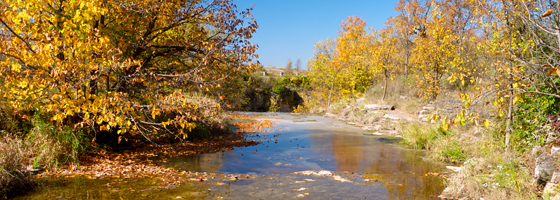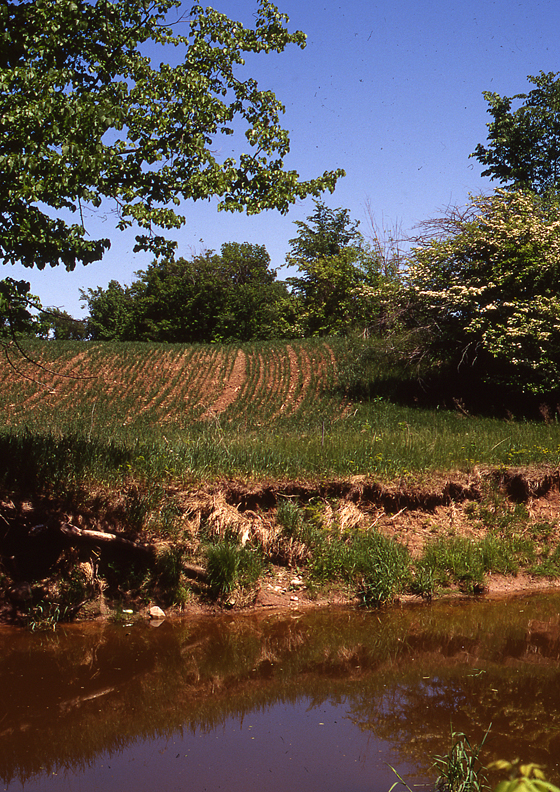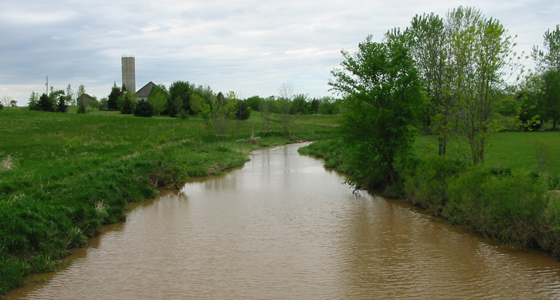20-year Wisconsin study backs conservation practices to cut farm runoff

A 20-year study of small watersheds across Wisconsin shows that conservation practices taken by farmers can play an important role in improving water quality.
The U.S. Geological Survey recently released the final installment in a series of four reports detailing the agency’s intensive water quality monitoring in watersheds where local landowners adopted a variety of runoff-curbing measures. The USGS worked with the Wisconsin Department of Natural Resources and multiple county-level conservation agencies on the program.
The most recent report covers a monitoring effort on Bower Creek that began in 1990 and ended in 2009. The methods weren’t out of the ordinary, but a study that relies on cooperation among multiple government agencies for long-term intensive monitoring over several small agricultural watersheds is a feat in itself.

Bower Creek (Credit: Judy A. Horwatich/USGS)
“The one thing that’s really unique is that we were able to sustain support for this—from the state agency, from the county and from the USGS, from all three agencies–for that long of a period of time,” said Steven Corsi, a research hydrologist with the USGS Wisconsin Water Science Center. “It’s really not common to have a 20-plus year study to evaluate these types of watersheds.”
The reports, released between 2003 and 2013, cover six small watersheds across the state. The monitoring measured suspended solids, total phosphorus and ammonia in watersheds before and after best management practices were initiated. Those practices included conservation tillage, fencing to keep cattle out of streams, manure management efforts and various stream bank protections.
The studies made use of stream gauging stations equipped with automated samplers that were activated when the stage reached a certain height. Automated samples were refrigerated and collected later for analysis. In addition to the automated samples, crews also manually collected samples around every two weeks.
The comprehensive data collection helped the researchers conduct rigorous statistical analysis on whether sediment and nutrient conditions had significantly improved in the study watersheds. Though no watershed showed across-the-board improvements in every category, the results of the studies generally indicate that the streams benefited from conservation efforts taken by local farmers.
The exception was the Bower Creek watershed. Though the data show that total phosphorous levels under normal flow conditions improved after best management practices began, that wasn’t the case for sediment and nutrient levels during storm events, when most of the loading tends to occur. Those measures didn’t show any improvements.
But that lack of improvement doesn’t necessarily mean that the conversation practices around Bower Creek weren’t effective.
For example, advances in dairy science over the 20-year course of the watershed study mean that the industry produces more milk per cow than it did when monitoring began.
“With increased milk production comes increased manure production, so it’s likely that more manure is spread on the field than there was in 1990,” Corsi said. “One might ask the question, ‘Would it have gotten worse without the (best management practices) in this case?’ And we don’t know the answer to that. The information isn’t there to answer that question.”

Bower Creek (Credit: Judy A. Horwatich/USGS)
Though the answer to that question isn’t clear, it’s at least obvious that the study wouldn’t have been possible without the support of the Wisconsin DNR and local agencies like the Brown County Land and Conservation Department, whose jurisdiction includes Bower Creek.
“The cooperation in a project like this was really nice between the different agencies. And the long-term cooperation then was even better,” Corsi said.
“To have the combined cooperation of three different agencies and the local landowners was really a critical thing for making a project like this work.”
Top image: Bower Creek was among six small Wisconsin watersheds in a study of whether conservation practices curbed nutrient and sediment runoff from farms (Credit: Daniel L. Olson/USGS)





0 comments